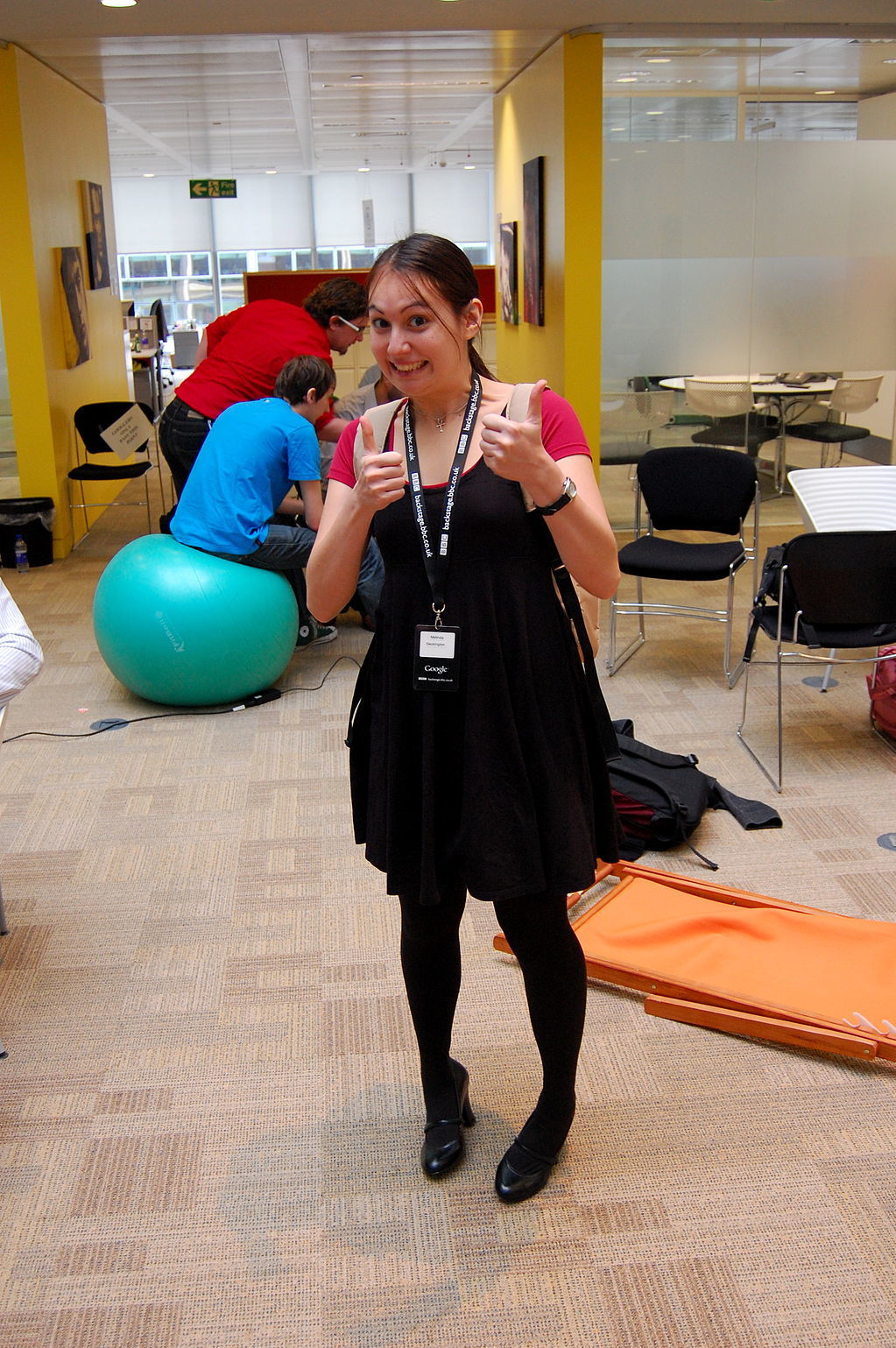Creative Thinking
Is Organizational Culture Shock Pushing Your Employees Away?
By Nicola Brown on December 8, 2016
On Friday morning, you walk into your monthly senior staff meeting, where your C-level executives are proposing plans for 2017. Over the course of the meeting, some troubling facts are brought to light.
You've been coming up short in sales each quarter, and profits are stagnating. You're hemorrhaging employees, and you can't afford to keep recruiting and hiring new ones. Clients are starting to notice that your staff just isn't putting the same gusto and creative thinking into their projects. As a result, you're starting to lose them, too. An organizational culture consultant is advising major changes. Are people unhappy here? You think. I had no idea.
And just when you think the stress can't get worse, you're nominated as part of a culture committee whose task it is to obtain employee feedback and generate creative solutions to address cultural concerns.
You Lost Me at Culture
It can be hard to wrap your head around what an organization's culture actually is. In his book Understanding Organizational Culture, Mats Alvesson wrote that "how people in a company think, feel, value, and act is guided by ideas, meanings, and beliefs of a cultural (socially shared) nature." Alvesson emphasized that the importance of a strong company culture is fundamental to the company's bottom-line performance. Forbes writer Steve Denning said "an organization's culture comprises an interlocking set of goals, roles, processes, values, communications practices, attitudes, and assumptions."
An organization's culture evolves naturally over time—often the result of shifts in economy, new scientific findings about productivity, generational habits and work behaviors, and a general interest in creating a company "personality" where employees can feel comfortable. You can generally track the ebbs and flows of organizational best practice by looking at the broader shifts in workplace trends. For example, think of the shift from closed offices to open-concept workspaces (and back again), and from well-defined hierarchies to flatter employee structures. There have also been shifts in flexibility away from the strict in-office 9-to-5 schedule to embrace the idea that so long as the work is done, when and where that work happens is less important. Many companies are becoming more global with offices in different time zones across the world and more remote workers who increasingly rely on digital communications alone. The Millennial generation is ushering in practices like beer Fridays, social nights, ping pong rec rooms and more casual attire, and the pace of technological change is placing greater emphasis on continual training and career development opportunities.
These changes reflect shifts in cultural values that speak to a greater emphasis on collaboration, flexibility, work-life balance, and more opportunities to fulfill goals that lead to self-actualization (maximizing talent and potential) and a sense of meaning or purpose—things that jive naturally with your employees' on personal and natural levels. Even the idea that a company's culture is important has been growing over time. Without evolving your cultural goals, you subject your employees to a kind of culture shock that comes from the stark difference between their worlds and yours.
Where Should I Start?
According to Denning, "changing an organization's culture is one of the most difficult leadership challenges." But that's not to say that change is impossible—you just need to take the right approach.
Because your company culture is an intricate feedback loop of beliefs and behaviors, an iterative two-part approach is needed:
1. Lay out the high-level strategy
Develop or update the vision, mission, and set of values by which you'd like to guide your organization. Make sure you establish a clear connection between these high-level concepts and how they relate to your employees' day-to-day activities and the company's bottom line. Outline examples of how core values can be acted out in everyday situations.
2. Plan tangible steps to achieve your strategy
It's not enough to state the values that ought to drive behavior in a company. You need to take steps to modify behaviors at the same time. Identify the most influential people in the company where driving behavior is concerned, and get them on board first. Start with small actions that can be incorporated into the daily environment that help people see how to act out the core values of your organization. Don't forget to establish rewards and repercussions for meeting, exceeding, or not living up to the value expectations of the company, because true, long-lasting behavioral change only works with clear, consistent feedback. Remember that the successful implementation of new strategies requires SMART objectives: specific, measurable, achievable, realistic, and time-bound.
Make sure you're providing intrinsic motivation for behavioral change. While extrinsic incentives like bonuses are received well by employees, it's the intrinsic incentives, like getting time to work on a project you're passionate about, that tap into the heart of what leads to authentic, long-term cultural change. The authenticity dimension is key here. According to a study from the Journal of Financial Economics, when managers are perceived as trustworthy and ethical, a firm's performance is stronger.
Culture Done Right
When a company makes its culture a priority, a lot of other problems fall to the wayside. Happy employees with flexible schedules are found to be healthier and more productive—resulting in lower employee turnover, happier customers—therefore lower customer turnover and more convincing sales.
 The power of organizational power is proven countless times by major brands in the marketplace. Just look at Google (now Alphabet), about which an employee said: "The company culture truly makes workers feel they're valued and respected as a human being, not as a cog in a machine." This is partly a result of the organization's outrageously generous benefits, but it's clear that the company invests in the right things: covering 100 percent of healthcare costs and offering healthy meals at work means employees never have to worry about getting the care they need and are more likely to be in top condition physically and mentally when they come in each day; organizing social activities allows employees to cultivate stronger social relationships with the people they work with, and allowing employees time to work on their own ideas keeps the company's innovation engine—which comprises some of the best minds in the business—running. Most importantly, employees feel like they are valued, and that is the psychological meat and potatoes of solid company culture.
The power of organizational power is proven countless times by major brands in the marketplace. Just look at Google (now Alphabet), about which an employee said: "The company culture truly makes workers feel they're valued and respected as a human being, not as a cog in a machine." This is partly a result of the organization's outrageously generous benefits, but it's clear that the company invests in the right things: covering 100 percent of healthcare costs and offering healthy meals at work means employees never have to worry about getting the care they need and are more likely to be in top condition physically and mentally when they come in each day; organizing social activities allows employees to cultivate stronger social relationships with the people they work with, and allowing employees time to work on their own ideas keeps the company's innovation engine—which comprises some of the best minds in the business—running. Most importantly, employees feel like they are valued, and that is the psychological meat and potatoes of solid company culture.
Zappos is another fantastic example. In a story for Entrepreneur, entrepreneur and marketer Sujan Patel wrote:
It starts with a cultural fit interview, which carries half the weight of whether the candidate is hired. New employees are offered $2,000 to quit after the first week of training if they decide the job isn't for them. Ten core values are instilled in every team member. Employee raises come from workers who pass skills tests and exhibit increased capability, not from office politics. Portions of the budget are dedicated to employee team building and culture promotion.
When you make cultural fit a primary focus in hiring, it ensures you maintain and reinforce your company's core values.
Consistently voted as one of the best places to work in New York City, SquareSpace also demonstrates how a combination of culture-boosting benefits like guest lecturers can be combined with a flatter hierarchical structure to make employees feel like they can communicate with management openly, making them more confident and content in their work. While flat management structures can be hard to maintain for larger companies, ensuring that managers remain accessible and communicative is a powerful way to make employees feel valued in an organization.
Strong organizational culture is all about using creative thinking in both the strategy and execution of values and behaviors at your company. To learn more about company culture in the workplace, subscribe to the Content Standard Newsletter

